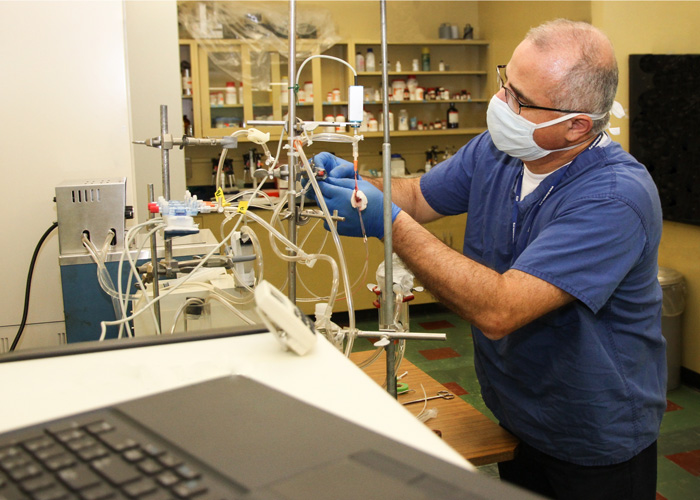Hughes Dissertation Abstract
Functional Magnetic Resonance Imaging and Machine Learning Elucidate Core Attention Shifting Network and Context Specific Neural Mechanisms
Dissertation Date: November 21, 2025
Attention is a universal cognitive mechanism that enables people to select important sensory information and filter out distractions. Through this process people can flexibly and quickly make accurate judgments about items in their environments to achieve their goals. We understand which brain regions are involved in controlling attention but do not yet know the specific computations performed and mappings contributed by each region. By better understanding attentional control mechanisms in healthy individuals, we can better understand how attentional control breaks down following injury or disease. To address the question of specificity in the neural control of attention, we compared neural responses during multiple attentional control conditions using functional magnetic resonance imaging and various machine learning techniques.
First, we characterized responses when people shifted between overlapping objects and compared conditions of when people were prompted to shift (cued), when they self-initiated a shift (non-cued), and when they momentarily lost control (false). False shifts differed in their attentional reconfiguration signal in left medial superior parietal lobule (a control region in posterior parietal cortex) while cued and non-cued shifts were similar. Additionally, cued shifts differed in their cue interpretation signal in right temporal-parietal junction. Other attentional control brain regions treated all conditions similarly.
Next, we compared responses when people shifted between spatial locations or between overlapping objects. We found that these two operations activated common brain regions and were treated similarly by attentional control sources in frontal brain regions. Conversely, there were separable patterns of activation in posterior parietal brain regions, suggesting that there might be distinct populations of neurons in this region for shifting between locations or objects.
Finally, we characterized neural responses when people shifted between spatial locations or overlapping objects to when people shifted between spatial locations and overlapping objects. Despite previous findings of shared resources in posterior parietal cortex for shifting between objects or spatial locations, when shifting between both, the overlap in these regions shrank substantially. Furthermore, when we evaluated how these brain regions process the different shift types (representational magnitude), we observed that shifting between both resulted in a higher magnitude than shift location and shift object independently. However, the representational magnitude for shift both was less than the sum of shift location and shift object. This could suggest that this shift-both operation involves a third population of neurons that coordinates between the location- and object-sensitive populations rather than being an amalgamation of two constitutive shifts.
Together, our results extend our understanding of how neural populations respond during different attentional control conditions. We observed that when shifting between the same type of information, the attentional control network behaves similarly. When shifting between different types of information, frontal regions provide a general control signal, while posterior parietal regions have dissociable patterns (a specific control signal). Furthermore, posterior parietal regions show that a separate population might be recruited when shifting between multiple types of information. These results point to a group of core brain regions that are active during shifts with peripheral resources being recruited to support shifting conditions as needed. This increases our understanding of the healthy attentional control system and could suggest avenues for exploring the development and diseases of the attentional control system.
Return to Dissertation Schedule


